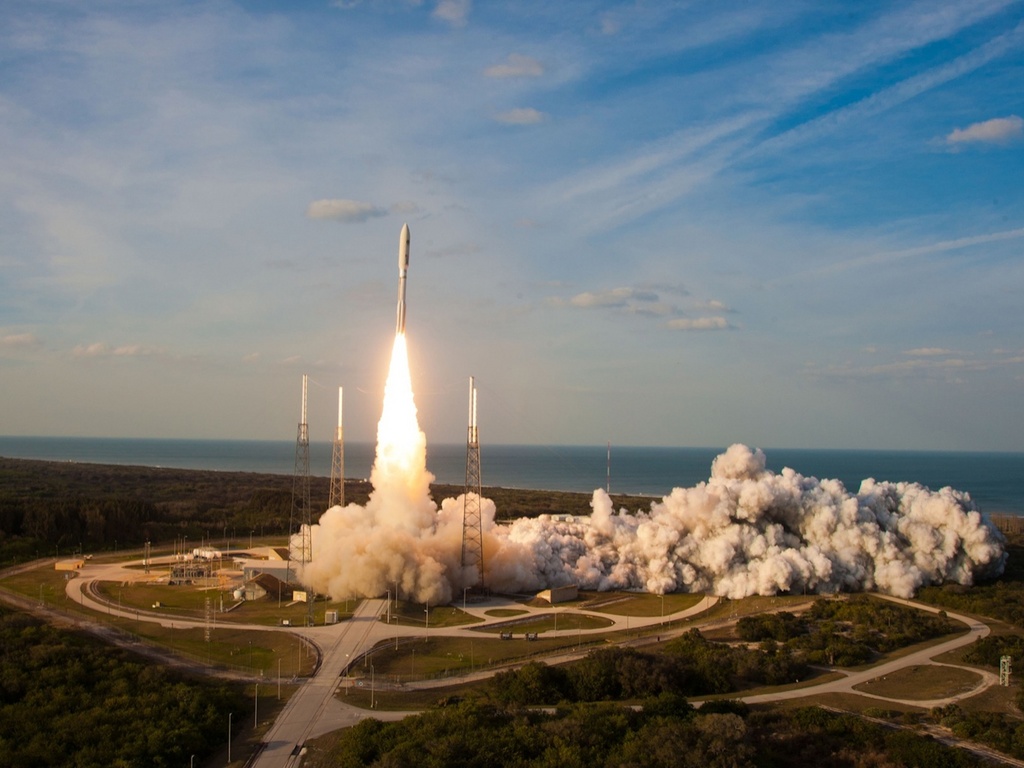
An unmanned rocket that three private spaceflight companies hope will be upgraded to help launch NASA astronauts into orbit could be operational by 2015, the rocket's builders said Wednesday (April 4).
A crew-carrying version of United Launch Alliance's Atlas 5 rocket — which is slated to loft the space taxis built by Boeing, Sierra Nevada and Blue Origin — requires about three more years of work, ULA officials said. That means the rocket's development is on track to help the companies start flying astronauts to the International Space Station by NASA's desired 2017 start date, they added.
"For Atlas 5, we believe we could do that within three years," Jeff Patton, manager for NASA and commercial crew and cargo programs at ULA, said during a presentation with NASA's Future In-Space Operations working group Wednesday. "We could certainly have Atlas ready by the time the spacecraft is ready."
Spurring private spaceflight
With the retirement of its venerable space shuttle fleet last July, NASA is now completely dependent on Russian Soyuz vehicles to carry its astronauts to the space station and back, at roughly $62 million per seat. [Vote Now! The Best Spaceships of All Time]
But the space agency is not content with this state of affairs. NASA wants American private spaceflight companies to take over this orbital taxi service by 2017, and it's encouraging the progress of multiple firms via its Commercial Crew Development (CCDev) program.
NASA has doled out CCDev funding in two rounds. In February 2010, the agency awarded a total of $50 million to five firms, including ULA, which received $6.7 million to help develop an emergency detection system. Such technology, which would monitor rockets' health and issue warnings or abort commands to crew during flight, is a key step toward human-rating a launch vehicle.
Get the world’s most fascinating discoveries delivered straight to your inbox.
Then the space agency split nearly $270 million among four firms — Boeing, Blue Origin, Sierra Nevada and SpaceX — in April 2011. NASA hopes that at least two of these companies will end up building viable crew-carrying spaceships, creating competition and driving costs down, officials have said.
The Atlas 5 rocket is the launch vehicle of choice for Boeing's CST-100 capsule and Sierra Nevada's Dream Chaser space plane. Blue Origin has said it will also go with the Atlas 5 initially, then transition to a rocket of its own design. SpaceX plans to launch its Dragon capsuleon its own Falcon 9 rocket.
While ULA was shut out of the second round of CCDev money, NASA did sign an unfunded Space Act Agreement with the company, agreeing to share information and work together with ULA to help human-rate the Atlas 5.
Upgrading the Atlas 5
The Atlas 5 rocket has launched 28 unmanned payloads since its debut in 2002, including NASA's Curiosity Mars rover and Juno Jupiter probe last November and August, respectively. The rocket has a 100 percent success rate.
While the rocket's track record is impressive, upgrading the Atlas 5 to carry crew still requires some work. The emergency detection system needs to be finished, for example. And a human-rated Atlas 5 will use a two-engine Centaur upper stage rather than the single-engine version currently in use, Patton said, so some more tweaks will be needed to accommodate the change.
ULA engineers also will adjust the upper stage slightly to carry crewed spaceships, and they'll have to figure out how astronauts will get into the vehicles on the launchpad — and how they'll get out, in case of an emergency or a delay.
If NASA awards crew-carrying contracts to Boeing, Blue Origin and Sierra Nevada, ULA will have to make sure that their fixes and upgrades work with three different spacecraft. While ULA officials are confident they can get the job done in a timely and efficient fashion, catering to three vehicles could make things more interesting.
"It kind of complicates the process a lot, when you're trying to be everything to everyone," Patton said.
This story was provided by SPACE.com, a sister site to LiveScience. You can follow SPACE.com senior writer Mike Wall on Twitter: @michaeldwall. Follow SPACE.com for the latest in space science and exploration news on Twitter @Spacedotcom and on Facebook.





